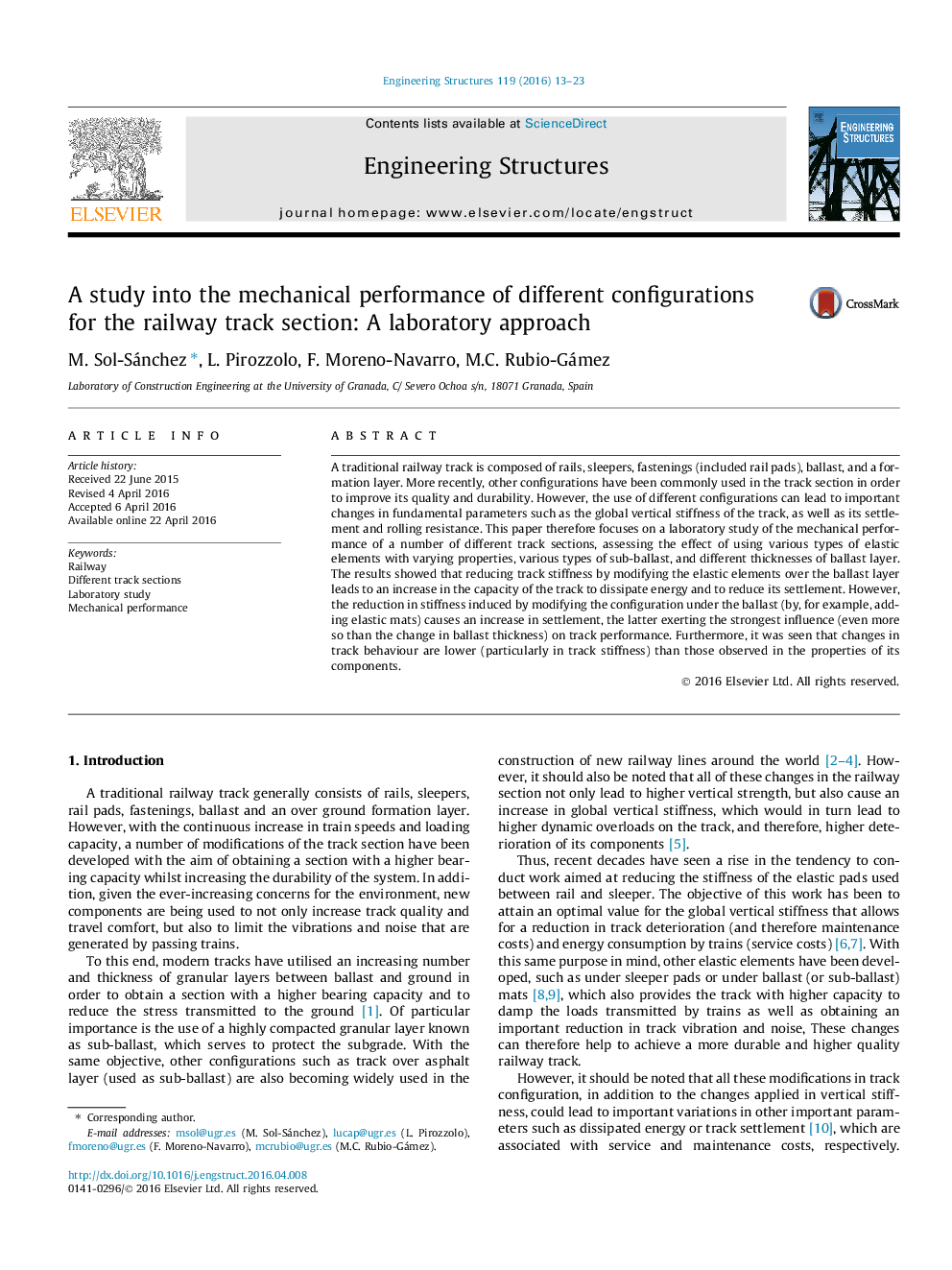| Article ID | Journal | Published Year | Pages | File Type |
|---|---|---|---|---|
| 265751 | Engineering Structures | 2016 | 11 Pages |
•Changes in track behaviour are lower than those applied in component properties.•The incorporation of new components leads to higher changes in track response.•Changes in settlement and dissipated energy are higher than those in stiffness.•Reduction in substructure stiffness causes higher settlements and lower resistance.•Bed-layers have higher effect on track response than properties of elastic pads.
A traditional railway track is composed of rails, sleepers, fastenings (included rail pads), ballast, and a formation layer. More recently, other configurations have been commonly used in the track section in order to improve its quality and durability. However, the use of different configurations can lead to important changes in fundamental parameters such as the global vertical stiffness of the track, as well as its settlement and rolling resistance. This paper therefore focuses on a laboratory study of the mechanical performance of a number of different track sections, assessing the effect of using various types of elastic elements with varying properties, various types of sub-ballast, and different thicknesses of ballast layer. The results showed that reducing track stiffness by modifying the elastic elements over the ballast layer leads to an increase in the capacity of the track to dissipate energy and to reduce its settlement. However, the reduction in stiffness induced by modifying the configuration under the ballast (by, for example, adding elastic mats) causes an increase in settlement, the latter exerting the strongest influence (even more so than the change in ballast thickness) on track performance. Furthermore, it was seen that changes in track behaviour are lower (particularly in track stiffness) than those observed in the properties of its components.
